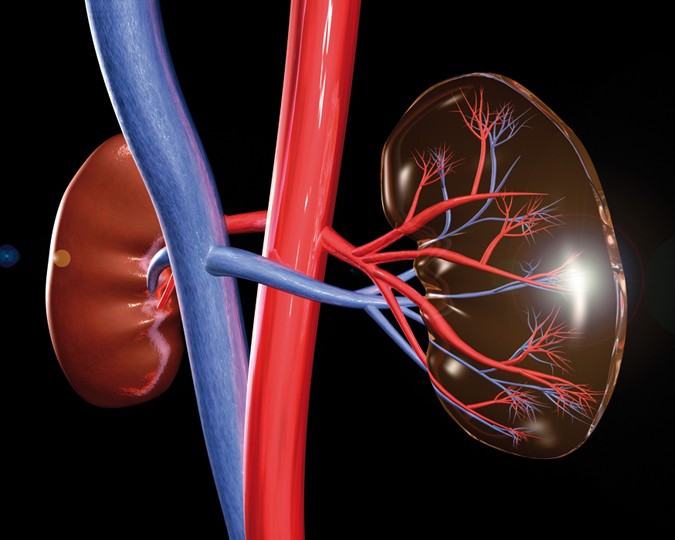Play all audios:
Access through your institution Buy or subscribe The use of iodinated contrast agents during diagnostic procedures, such as coronary or peripheral angiography or ventriculography, is
associated with acute kidney injury (AKI), particularly in patients with high-risk comorbidities. Prevention strategies for contrast-induced AKI currently include optimal intravenous
hydration during the procedure, and using reduced doses of low osmolarity or iso-osmolar contrast agents. Evidence from observational studies suggests that statins might also be used to
prevent contrast-induced AKI. Two randomized trials published in the _Journal of the American College of Cardiology_ add weight to this hypothesis. The studies provide the first prospective
data confirming that the incidence of AKI is reduced, and clinical outcomes improved, among patients treated with rosuvastatin before contrast administration. Han _ et al_. enrolled patients
with type 2 diabetes mellitus or stage 2 or 3 chronic kidney disease from 53 clinical centres in China. Participants were randomly assigned to receive 10 mg rosuvastatin per day for 2 days
before and 3 days after the diagnostic procedure involving iodixanol contrast (_n_ = 1,498) or to no statin therapy (_n_ = 1,500; control group). Hydration with isotonic saline was given at
the discretion of the treating physician. The primary end point was development of contrast-induced AKI, as defined by an increase in serum creatinine concentration ≥0.5 mg/dl or ≥25%
baseline level at 72 h after contrast injection. The incidence of contrast-induced AKI was significantly lower among patients in the rosuvastatin group than those in the control group (2.3%
vs 3.9%; OR 0.58, 95% CI 0.38–0.89, _P_ = 0.01). Moreover, patients who received rosuvastatin had a reduced risk of worsening heart failure within 30 days (2.6% vs 4.3% in the control group;
_P_ = 0.02). The rate of death or need for dialysis at 30 days did not differ between the two groups. Rosuvastatin therapy was not associated with an increased risk of adverse events, such
as myalgia, rash, oedema, or gastrointestinal disorders. The investigators commented that, even though the daily dose of statin was low, the plasma exposure to rosuvastatin is thought to be
twofold higher in Asian than in white populations. Therefore, the dose in their study “might be aligned with the efficacy of higher dosage used in Western countries”. This is a preview of
subscription content, access via your institution RELEVANT ARTICLES Open Access articles citing this article. * HDL CHOLESTEROL LEVEL IS ASSOCIATED WITH CONTRAST INDUCED ACUTE KIDNEY INJURY
IN CHRONIC KIDNEY DISEASE PATIENTS UNDERGOING PCI * Hoon Suk Park * , Chan Joon Kim * … Ki-Bae Seung _Scientific Reports_ Open Access 24 October 2016 ACCESS OPTIONS Access through your
institution Subscribe to this journal Receive 12 print issues and online access $209.00 per year only $17.42 per issue Learn more Buy this article * Purchase on SpringerLink * Instant access
to full article PDF Buy now Prices may be subject to local taxes which are calculated during checkout ADDITIONAL ACCESS OPTIONS: * Log in * Learn about institutional subscriptions * Read
our FAQs * Contact customer support REFERENCES * Han, Y. _ et al_. Short-term rosuvastatin therapy for the prevention of contrast-induced acute kidney injury in patients with diabetes and
chronic kidney disease. _J. Am. Coll. Cardiol._ 10.1016/j.jacc.2013.09.017 * Leoncini, M. _ et al_. Early high-dose rosuvastatin for contrast-induced nephropoathy prevention in acute
coronary syndrome. Results from the Protective effect of Rosuvastatin and Antiplatelet Therapy On contrast-induced acute kidney injury and myocardial damage in patients with Acute Coronary
Syndrome (PRATO-ACS) study. _J. Am. Coll. Cardiol._ 10.1016/j.jacc.2013.04.105 Download references Authors * Alexandra Roberts View author publications You can also search for this author
inPubMed Google Scholar RIGHTS AND PERMISSIONS Reprints and permissions ABOUT THIS ARTICLE CITE THIS ARTICLE Roberts, A. Rosuvastatin can prevent contrast-induced AKI. _Nat Rev Cardiol_ 10,
679 (2013). https://doi.org/10.1038/nrcardio.2013.166 Download citation * Published: 29 October 2013 * Issue Date: December 2013 * DOI: https://doi.org/10.1038/nrcardio.2013.166 SHARE THIS
ARTICLE Anyone you share the following link with will be able to read this content: Get shareable link Sorry, a shareable link is not currently available for this article. Copy to clipboard
Provided by the Springer Nature SharedIt content-sharing initiative

